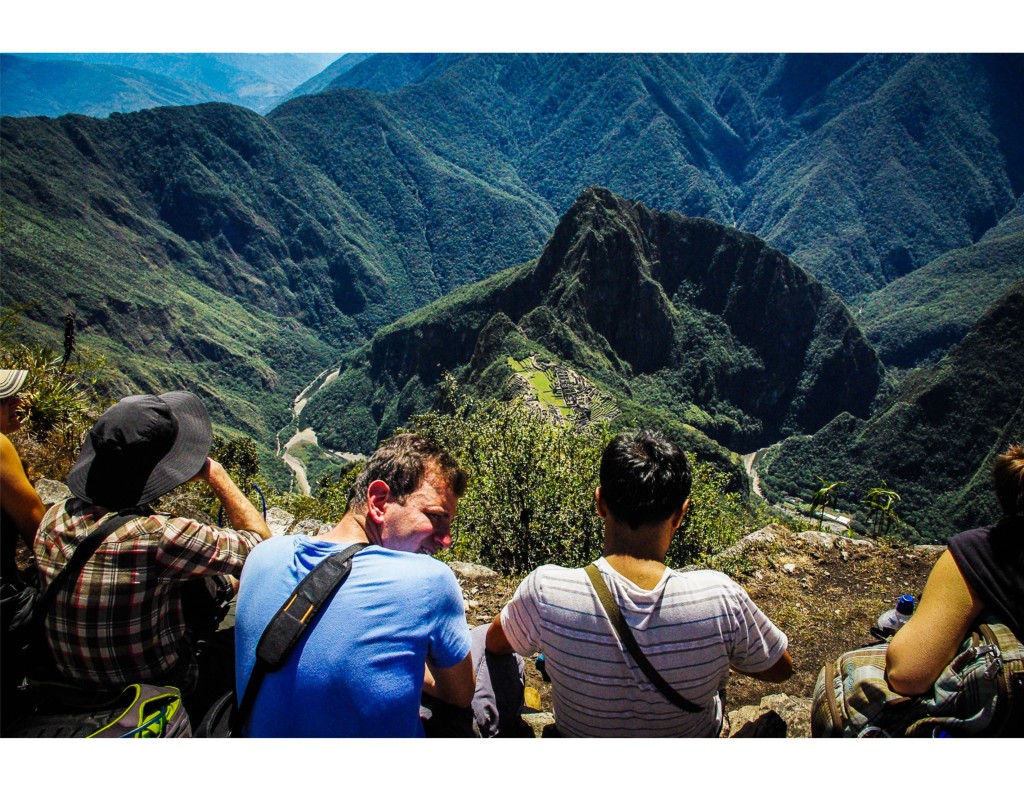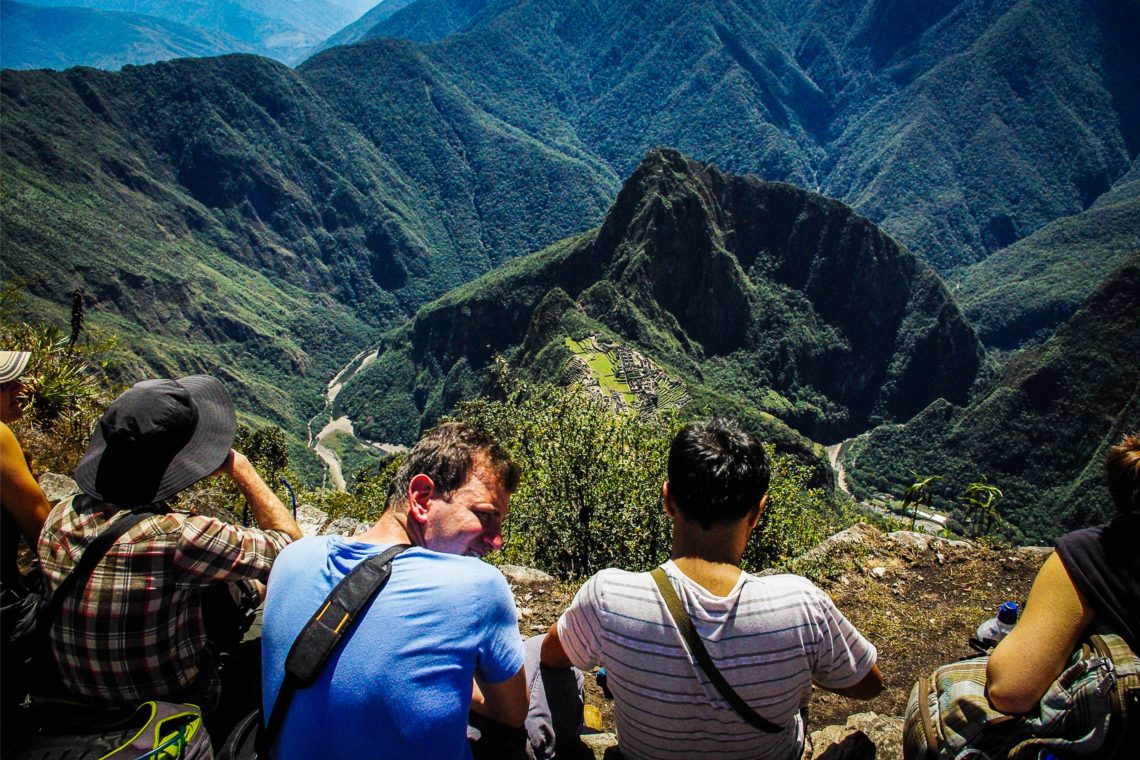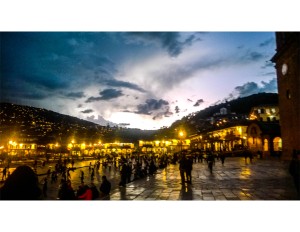I don’t usually have guest bloggers but it’s good to get different perspectives on topics related to fitness and adventuring. Walter Rhein is an author of several books including, most recently, “Reckless Traveler” which is an autobiographical work on Rhein’s travels and adventuring in South America. We crossed paths online when we were both quoted in a Classpass.com article on what it feels like to finish one’s first marathon. Walter was kind enough to share his book “Reckess Traveler” with me so while you read his post below I’ll be digging into his book.
Adventure Vacations for Marathoners
by
Walter Rhein
When you’re compelled to run marathons, few days go by when you don’t think about your upcoming race. Whether the event is twelve months or twelve days away, your schedule is influenced by the upcoming test. Every waking moment is dominated by thoughts of the food you eat, the hours you sleep, and the arduous training that never seems to be enough. In the midst of all that intensity, it can be difficult to find a way to spend quality time with the people you care about.
Vacations are important for the body and the spirit, but once in a routine, athletes are sometimes reluctant to change. Fortunately there’s no reason to give up your training routine for the sake of breaking out of the doldrums of your everyday life. An adventure vacation is the best way to integrate your need for travel with your rigorous training schedule.
Several years ago I accompanied Olympic athlete Roberto Carcelen on a ten day training camp in Peru’s Sacred Valley. Roberto was preparing for the Sochi Olympics by doing a hike through the Andes from the ruins of Choquequirao to Machu Picchu. During this trip, my eyes were opened to how perfect the terrain of the Sacred Valley is for an intense training camp. We all have to do our 20 mile runs, why not do them in the shadow of ancient Incan ruins? We stayed in tents and although the views were spectacular I’d recommend staying in hotels if you decide to target the Sacred Valley as a family getaway. The hotels of Cusco and the surrounding cities are wonderful, and they afford your non-marathon running companions opportunity to relax in comfort and style while you’re out hammering yourself in the morning.
We stayed in tents and although the views were spectacular I’d recommend staying in hotels if you decide to target the Sacred Valley as a family getaway. The hotels of Cusco and the surrounding cities are wonderful, and they afford your non-marathon running companions opportunity to relax in comfort and style while you’re out hammering yourself in the morning.
Cusco is one of the most beautiful cities in the world and the dining is delicious, affordable, and elegant. As a training destination, Cusco has the advantage of being at 11,000 ft of elevation. Doing any kind of physical activity at that kind of altitude is going to take its toll, and I highly recommend that athletes allow themselves a bit of time to acclimate.
Most tourists who visit the region sign up with bus tours to see the local sights. However, if you’re there to train you can easily hike or jog to the areas of interest. Hiking at Cusco’s altitude provides plenty of activity to prep you for any upcoming race.
There is a beautiful set of ruins called Sacsayhuaman which is about a forty five minute walk from the city center. This is a great activity for your first day as it allows you to test how your body reacts to the altitude. The roads leading to Sacsayhuaman are well-used and it’s easy to flag down a taxi back to the city center if the effort proves to be too much.
After a couple nights at Cusco, you can begin your descent through the sacred valley towards the ruins of Machu Picchu. Machu Picchu is much lower than Cusco, so it’s best to save your most strenuous training days for the end of the week to give your body time to acclimate.
Pisaq is a city about an hour away from Cusco with the opportunity for a very challenging hike. Most tourists take a bus to the upper ruins and hike down into the city center, but if you want to challenge yourself, start at the city center and go up. The two to three hour hike is almost all climbing, and leaves you exhausted at the end of the day.
From Pisaq, you can head down to Ollantaytambo. The ruins of Ollantaytambo are spectacular, but only take about an hour to hike. However, there are many trails leading out from the city into the surrounding mountains which are endless, challenging and beautiful.
From Ollantaytambo you take a train to Aguas Calientes, the city at the foot of Machu Picchu. Most tourists purchase bus tickets to take them to the ruins, but there is a very beautiful foot path that winds up the mountain and takes one to two hours to traverse. All of these training opportunities are hidden in plain sight, but the majority of the tourists who visit the area are seeking relative comfort so the “adventure tour” has the added advantage that it helps you avoid the crowds.
I recommend that people spend a minimum of two days hiking Machu Picchu. On day one you can see the regular ruins and get your facebook profile picture. Day two, however, is the hard day where you climb up Machu Picchu mountain. This is a very tough climb that takes about three hours from the entry gate to the park. If you add in the descent to and from Aguas Calientes, you could be looking at a five to six hour hike.
Throughout Sacred Valley, but particularly at Machu Picchu, the trails are not for the faint of heart. Much of the time you’re walking along very steep cliffs which plummet away into equally spectacular and terrifying vistas. Machu Picchu Mountain peaks at about 8,000 ft of elevation. After having spent a few days at Cusco, you feel like you’re bathing in Oxygen.
A trip to Peru’s Sacred Valley can be as challenging as you want it to be. The terrain is difficult and there are trails which crisscross the landscape in every direction. Also, Peru’s Sacred Valley is extremely safe as tourism is such a major revenue generator for the country. I’ve seen pro athletes wear a heart rate monitor and then record the time spent over 145 as their “training block” for the day. This is a little bit less regimented approach for a week, but every time I’ve returned from the Sacred Valley I’ve experienced a speed burst in my training runs. Our regimented training schedules keep us fit for when we’re balancing fitness and work, but adventure vacations give you the opportunity to train like an Olympian.
About the Author:
Walter Rhein is the author of “Reckless Traveler” a novel dealing with the 10 years he spent living in Lima, Peru. The book features several chapters on his Inca Trail adventure with Roberto Carcelen and world champion cross-country skier Martin Koukal. He blogs about Peru at StreetsOfLima.com, and can be reached for questions or comment at: WalterRhein@gmail.com.


